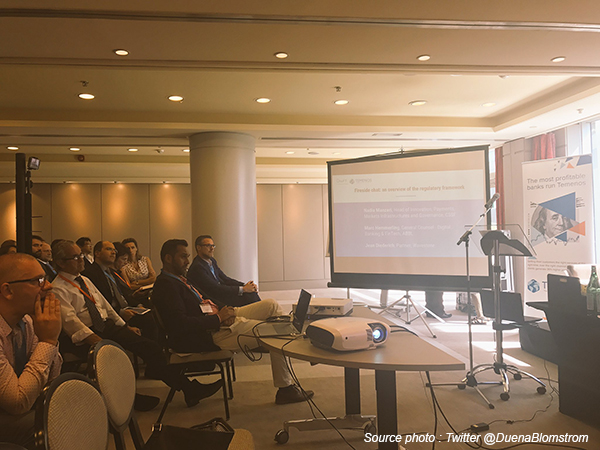TECH NEWS
PSD2, IT, and banking strategy
Payments could and should be easier and safer. Also, banks are failing to unlock the value in the data they hold. Unleashing the creativity of fintech businesses in an open-banking environment could be the answer.
July 24, 2017

Payments could and should be easier and safer. Also, banks are failing to unlock the value in the data they hold. Unleashing the creativity of fintech businesses in an open-banking environment could be the answer. This is the essence of the opportunities partially being driven by the EU’s second payment services directive (PSD2). By Stephen Evans and Kanika Hope
The main aim of PSD2 is to encourage encourage innovation and competition in the European payments market. They could either compete with banks and card companies, or provide the incumbents with complementary services.
As of 13th January 2018 banking clients will be able to request payment services from third party providers. “We first saw PSD2 as a threat, but after analysis we realised the opportunities that would arise from a fundamental rethink of how we operate,” said Didier Richter, Head of Digital Banking at Banque Internationale Luxembourg (BIL).
He was speaking at the “Mastering transformation: PSD2 and Open Banking” event organised on 5th July by the Luxembourg House of Financial Technology (LHoFT) and Temenos.
Fintechs as bank partners
Mr Richter said the first step was to put the client at the heart of their considerations, rather than the traditional focus on internal processes. This will open the way to tapping into breakthroughs made by innovative tech firms. “It’s a change of mind-set: seeing fintechs as partners rather than as rivals,” he said.
This is the essence of the “open-banking” model, whereby banks’ client relationships, strategic and regulatory insight, and product expertise can be blended with innovations developed in the open market. At the heart of this relationship will be application programming interfaces (API) which allow third parties access to customer data to provide new functionality.
“Open banking is leading to the rise of new business models in banking.” argued Kanika Hope, Strategic Business Development Director, Retail & Corporate Banking, Europe at Temenos. “From the traditional full-service bank that controls both product manufacturing and distribution, three new models could arise: manufacturers that build products for distributors, distributors that rely heavily on third-party manufacturers for their products and B2B platforms which are market intermediaries connecting manufacturers and distributors.”
New focus on customer experience and personalised, value-added services
“As a result of the opening up of the banking value chain, incumbent banks are having to work out what components of the value chain are profitable and thus should be core, which could be outsourced, which are candidates for collaboration with fintechs and which can be insourced where the bank becomes a utility,” explained Ms Hope. The Bank of Ireland in the UK is one example of a manufacturer model as it provides banking products and services to the UK Post Office.
Credit Agricole in France is an example of collaboration. It was one of the first banks to launch an app store.
The CA App Store crowd-sources ideas from customers and then hands them to third party developers to develop value-added services in response, such as apps for gamification of savings goals, plotting transactions on a map or providing price-comparison services. In essence, banks are looking to offer tailored financial services to add value to their customers based on their understanding of customer behaviour and needs, using own and third-party capabilities.
BIL is a prime example of this. As well as seeking to open their systems to new clever and agile applications, BIL are using this rethink to move to an “omni-channel” banking model. This implies a seamless, continuous service between online and in-branch services. Mr Richter pointed out that not only does this all require an up-grade of legacy IT systems, it also needs a rethink of the way departments work together.